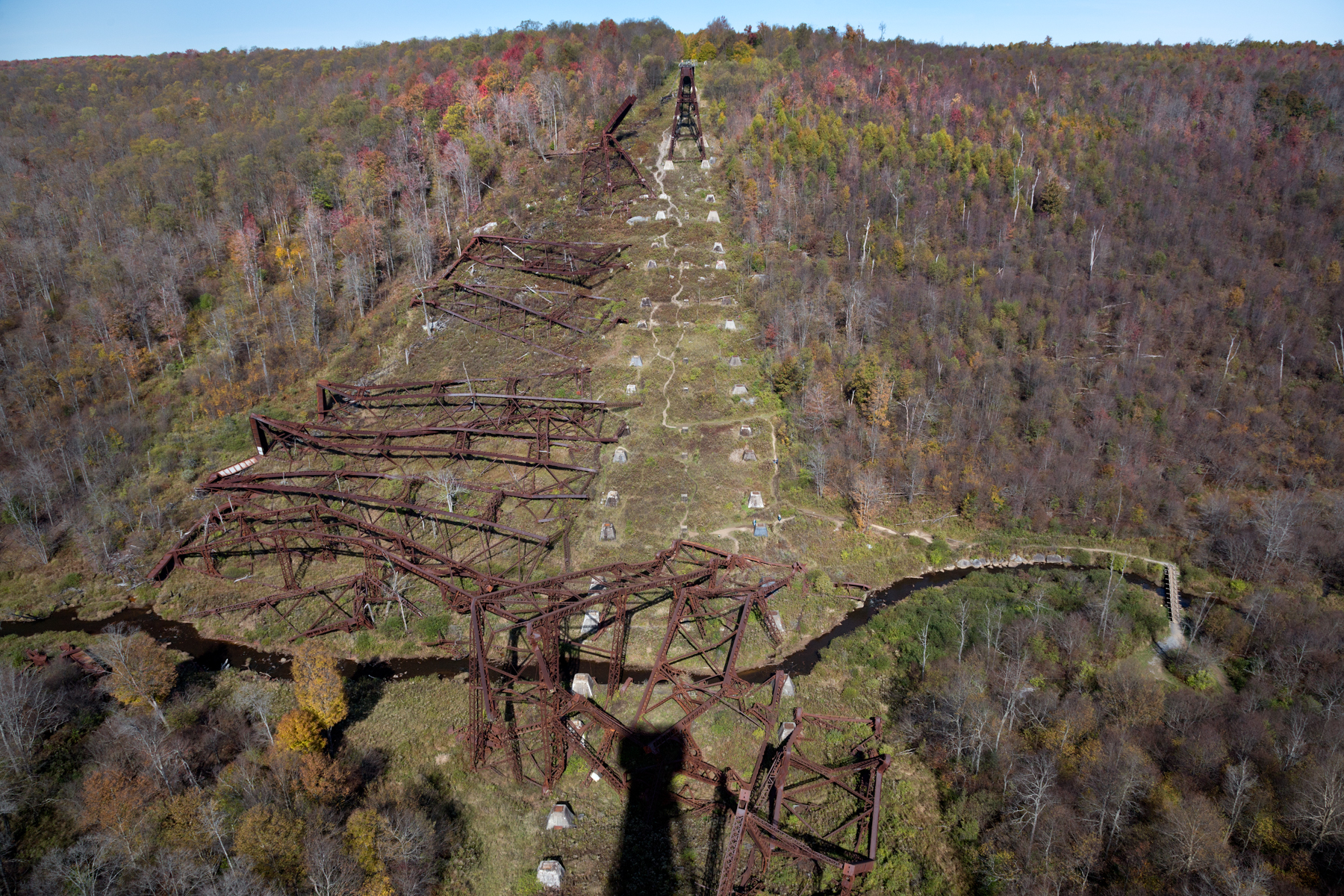You are here
Rapidly swirling winds forcefully whipped through the Kinzua Creek Valley and changed history. On the afternoon of July 21, 2003, with wind speeds of 73-112 mph, the F1 tornado hit the Kinzua Viaduct. What was once the highest railroad bridge in the world, was suddenly ripped apart. Eleven steel towers were violently torn from their cement bases and heaved into a twisted, contorted heap on the valley floor.
Originally conceived as a shortcut across the valley, the Kinzua Viaduct was championed by U.S. Civil War General Thomas Kane. As president of the New York, Lake Erie, and Western Coal and Railroad, Kane sought the best way to get Pennsylvania’s McKean County riches of coal, timber and oil to the then booming market in Buffalo, New York. But the half-mile, 300-foot deep Kinzua Creek Valley presented an obstacle. There were three options to traverse the area: lay another 8 miles of track over rough terrain to go around the valley; venture into the steep valley in a slow zigzag; or, create what became known as the “eighth wonder of the world,” the 301-foot high, 2,053-foot long Kinzua Viaduct.
For a comprehensive look at how “dangling daredevils” built this astounding bridge in 1882, stop in the park’s visitor center. Here you’ll learn how the engineers used the Phoenix Column, a deceptively strong, hollow, wrought iron column with riveted joints to build the original bridge in just 94 days, and how it was rebuilt with steel in 1900, using two 180-foot moveable platforms called travelers.
The visitor center offers unique interactive displays and museum-quality sculptures to explain the viaduct’s history. Here you’ll learn that after decades of use, freight traffic was discontinued. But that’s not the end of the viaduct’s history. The Kinzua Bridge State Park was created and the viaduct was placed on the National Register of Historic Civil Engineering Landmarks. Visitors thrilled to excursion train rides across the bridge, but in 2002, an inspection revealed sections of steel were rusted, and the bridge was closed to all traffic, even pedestrians. Then, came the tornado.
Today, adventurers to the park can enjoy two hiking trails, the 1-mile General Kane Trail that wanders through Pennsylvania’s beautiful woodlands, or the fascinating Kinzua Creek Trail that leads to the base of the remaining viaduct towers. A shaded picnic area is conveniently located near the visitor center.
But, the highlight of the park remains the famous viaduct. Once again reimagined, six original towers that remained standing after the tornado, have been restored and creatively transformed into an extraordinary Skywalk. Adventurers can stroll for free high above the valley on the once famous Kinzua Viaduct, walking along the railroad tracks or on the wooden planks adjacent to the rails. Dare to look over the edge at the trail below. Look through the tracks to the distant ground, or gaze through the section of glass floor to see the original towers below your feet. An adventure onto the Skywalk provides a panoramic view of the peaceful woodlands, and in stark contrast, the mangled steel that still fills the valley as evidence of the viaduct's violent history.
Logistics + Planning
Current Weather: Powered by Dark Sky
























Comments
Sign In and share them.